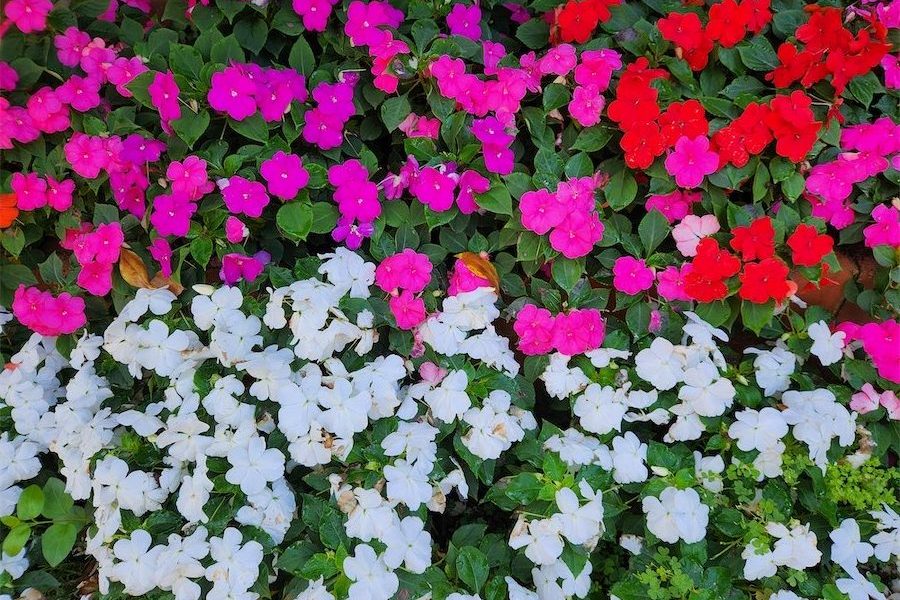PEONIES are aptly described as: “Whilst the flowers of the tree peony are extravagant and sumptuous, the herbaceous kinds are smaller, but have a quality and refinement which immediately claims the attention”.
Many gardeners consider peonies as difficult to grow, whereas nothing is further from the truth.
It is also said that peonies take years before they flower. The flowering time can vary and this depends, as with most perennials, on the right position and how well the soil is prepared. The magnificent herbaceous peony shown here in our garden, namely P. “Sarah Bernhardt”, flowered in its first year.
Herbaceous peonies are the subject of today’s article.
Paeonia lactiflora, known as the “Queen of Flowers”, grows in many parts of the world from Asia and southern Europe to the western US. The name originates in Greek mythology. Named after Paean, a student of Asclepius, the Greek God of medicine and healing.
Asclepius became jealous of his up-and-coming student Paean, with Zeus coming to the rescue, saving Paean from Ascepius’ wrath and turning him into a flower. The roots have been used for traditional medicines in the East for centuries and the longest used flower in Eastern culture. Interestingly, they are the State flower of the American State, Indiana.
HERE are a few hints on growing peonies, firstly noting they are very drought hardy and so ideal for our climate. Their growth habit and growing conditions are similar to Dahlias, also originating in a hot climate, namely Mexico.
Similarly, they will grow in any well-drained soil – well-drained is the key; they won’t tolerate water-logged soil or the tubers will quickly rot. They prefer growing in full sun. The best time to dig and divide is autumn when the leaves have died down.
PROPAGATION is, once again, similar to Dahlias with division of the tubers [roots]. When planting keep the highest crown bud only 5cm below the surface. If planted too deeply they will take longer to flower and they do not like being moved once established.
The soil can be improved with applications of compost or well-rotted manure. Keep chemical fertilisers and fresh manures well away from the tubers. While it is tempting to cut the flowers, commercial growers suggest that one should not cut flowers for the first three years of its life. For the first few years let the tubers get well established.
After planting, water in with Maxicrop Seaweed Plant Nutrient and in spring and autumn apply Neutrog “Seamungus”, a combination of seaweed and chook poo in pelletised form. Mulch with Canberra Sand and Gravel’s “Canberra Organic Mulch”.
VARIETIES I have seen offered for sale at Heritage Nursery include:
Peony “Marie Lemoine” has double, pure-white flowers with red edges on some of the petals. P. “Kansas” with rich double red non-fading flowers.
P. “Heaven Scent”, as the name suggests, has a wonderful fragrance with rose-pink flowers that are heavily ruffled in the centre. P. “Early Delight” is an early flowering variety with single, pale-pink flowers and cream-centre ruffles.
CONTINUING from last week on alternate fruits to think about growing, consider Feijoa sellowiana known as pineapple guava for its distinctive, pineapple-tasting fruit.
The fruit, the size of an egg, stays green even when ripe. It has a multiplicity of uses, from eating fresh on ice-cream, adding to fruit salads to making jams and jellies.
It also makes a great hedge. Feijoa are extremely drought hardy originating in South America – from Brazil to Argentina and Uruguay.
This week…
-
Plant a Bay tree, the leaves essential in casseroles and stews.
-
Sow seeds of Delphiniums, Lupins, Larkspur and Virginian Stock.
-
Plant Canna and Calla lilies for a bold summer display.
-
Still not too late to plant sweet peas.
-
Cut back hard ornamental grasses.
Who can be trusted?
In a world of spin and confusion, there’s never been a more important time to support independent journalism in Canberra.
If you trust our work online and want to enforce the power of independent voices, I invite you to make a small contribution.
Every dollar of support is invested back into our journalism to help keep citynews.com.au strong and free.
Thank you,
Ian Meikle, editor




Leave a Reply